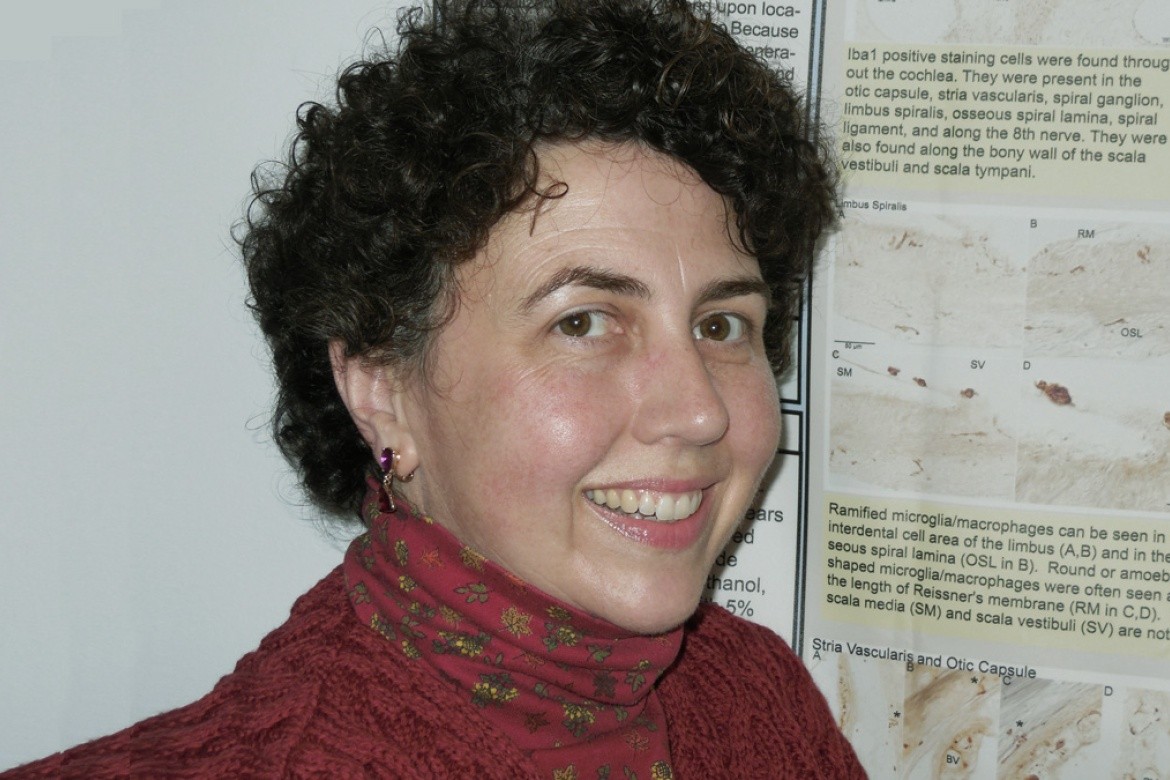My career in Immunopathology

How lucky I was to be able to go out into the real world as an undergraduate and try on many possible career "hats".
Major: Biochemistry
Internships: Baystate Medical Center; Children's National Medical Center, Washington DC
Employer: Otolaryngology Dept., Massachusetts Eye and Ear Infirmary
When I was in high school, I was positive medical school was in my future. And then I got to college. MHC was rich with opportunity. And for that I am deeply grateful. I was able to complete a J-term internship at Baystate Medical Center shadowing a cardiac surgeon freshman year, followed by an internship at the Children's National Medical Center in Washington, DC after sophomore year, and then participate in independent research on campus following junior year.
Summer research at MHC led to independent study and writing a senior thesis. These experiences shaped my college years and my working career. How lucky I was to be able to go out into the real world as an undergraduate and try on many possible career "hats".
Turns out operating on another human being or watching children die from cancer due to lack of treatment was not something I could see myself doing for my life's work. But this thing called research, now that was something I really ended up loving. I finally figured out that as a doctor, you can help your patients, but as a scientist you can help everyone's patients! You see, if you figure out how something works, you have the potential to help everybody.
The first 15 years of my work were spent conducting both human and marine mammal hearing research. My work was done at both the Massachusetts Eye and Ear Infirmary (MEEI) and at Woods Hole Oceanographic Institution. I have processed, sectioned, and histologically analyzed all sorts of ears from turtles to blue whales.
As a Lab Specialist at MEEI, in the department of Otolaryngology, I have spent the last 10 years systematically developing new techniques to study the human temporal bone. It is not possible to biopsy the inner ear without destroying residual hearing. The only way to analyze the pathology associated with inner ear disease is through postmortem studies.
Thanks to the efforts of our lab, we can now reliably immunohistochemically probe archival human temporal bones. Our active projects include cellular immune responses following cochlear implantation and the immunopathology of vestibular schwannomas. Once believed to be "immuno- privileged", we are just beginning to appreciate that the inner ear has the cells necessary to mount both an innate and adaptive immune response. We are hopeful that continued characterization of these cells will lead to new therapeutics and possible cures for hearing loss.
Recent Publications:
O'Malley JT, Nadol JB Jr, McKenna MJ. Anti CD163+, Iba1+, and CD68+ Cells in the Adult Human Inner Ear: Normal Distribution of an Unappreciated Class of Macrophages/Microglia and Implications for Inflammatory Otopathology in Humans. Otol Neurotol. 2015 Oct 12. [Epub ahead of print] PMID: 26485593 [PubMed - as supplied by publisher]
Nadol JB Jr, O'Malley JT, Burgess BJ, Galler D.Cellular immunologic responses to cochlear implantation in the human. Hear Res. 2014 Dec;318:11-7. doi: 10.1016/j.heares.2014.09.007. Epub 2014 Oct 5. PMID: 25285622 [PubMed - indexed for MEDLINE]
O'Malley JT, Burgess BJ, Zhu MY, Curtin HD, Nadol JB Jr.Correlation between histologic and radiographic reconstruction of intracochlear electrode position in human temporal bones. Audiol Neurootol. 2014;19(3):184-92. doi: 10.1159/000358003. Epub 2014 Mar 27. PMID: 24686209 [PubMed - indexed for MEDLINE] Free PMC Article